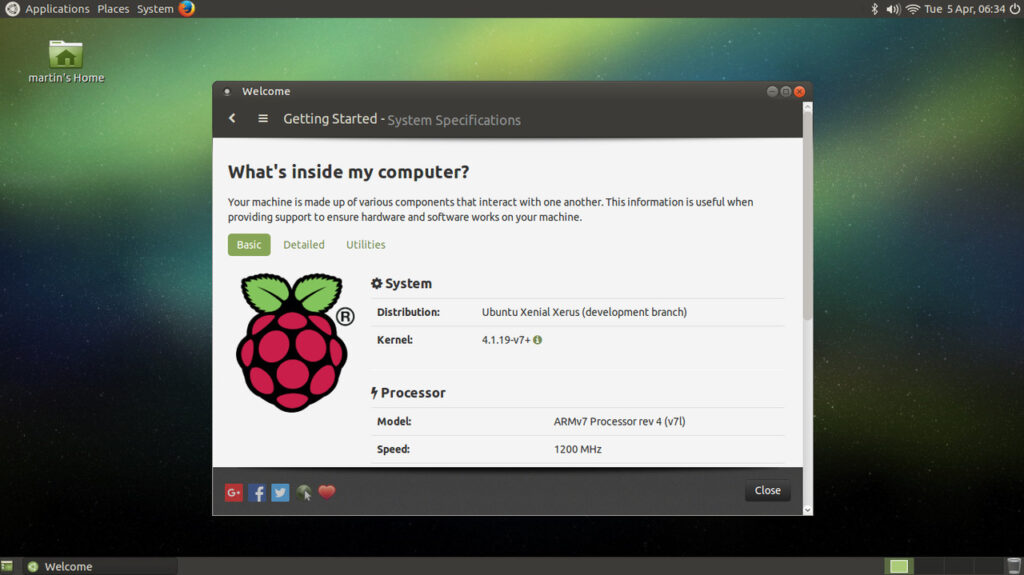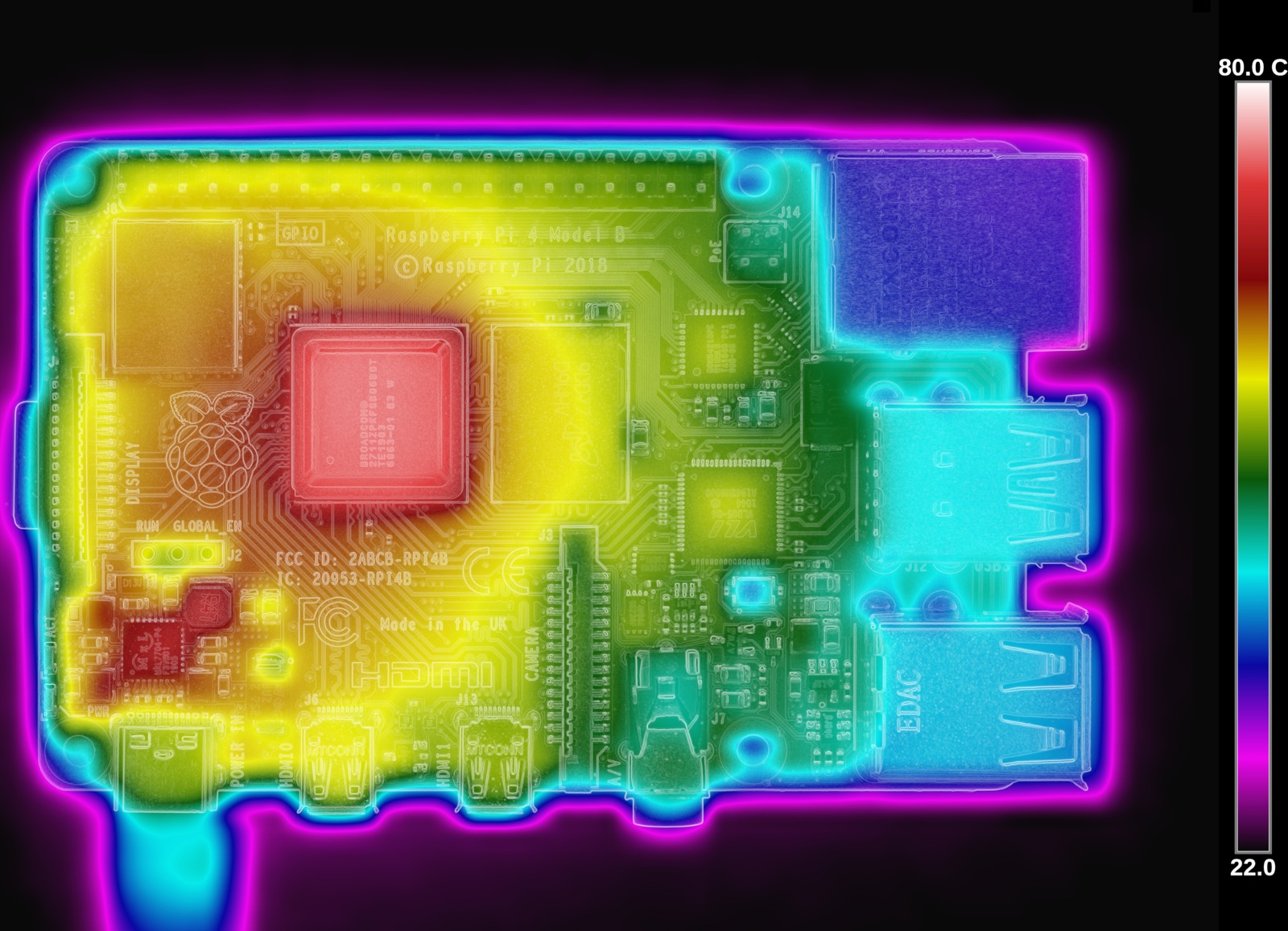Table of Contents
In the world of single-board computers, few names stand out as prominently as the Raspberry Pi. Among the various models in the Raspberry Pi family, the Raspberry Pi 4 has gained immense popularity for its impressive Specifications and versatility. In this comprehensive guide, we will dive deep into the Raspberry Pi 4 specs to understand what makes it a powerhouse in the SBC arena.
Part 1: The Hardware Overview
1.1. Introduction to Raspberry Pi 4
The Raspberry Pi 4, commonly referred to as the RPi 4, was released in June 2019 as the successor to the Raspberry Pi 3 Model B+. It brought significant improvements in terms of hardware capabilities, making it suitable for a wide range of projects, from DIY enthusiasts to industrial Applications.

1.2. CPU and GPU
At the heart of the Raspberry Pi 4 lies a quad-core ARM Cortex-A72 CPU, which is a significant upgrade over the previous models. This CPU, coupled with a VideoCore VI GPU, delivers impressive Processing Power for multimedia and general-purpose computing tasks.
1.3. RAM Options
The Raspberry Pi 4 is available in three RAM configurations: 2GB, 4GB, and 8GB LPDDR4-3200 SDRAM. This versatility allows users to choose the right amount of Memory based on their specific needs, whether it’s for basic computing or more memory-intensive applications.

1.4. Connectivity
One of the standout Features of the Raspberry Pi 4 is its enhanced connectivity options. It includes two USB 3.0 ports, two USB 2.0 ports, dual-band wireless LAN (2.4GHz and 5GHz), Bluetooth 5.0, Gigabit Ethernet, and support for two 4K displays via micro HDMI ports.

1.5. Storage
For storage, the Raspberry Pi 4 retains the microSD card slot for the <a href=”https://simple.wikipedia.org/wiki/Operating_system”>Operating <a href=”https://simple.wikipedia.org/wiki/System”>System</a></a>, but it also includes two USB 3.0 ports, which provide faster data transfer speeds and are ideal for connecting external storage devices.
1.6. Power Supply
The RPi 4 requires a 5V USB-C power supply, which is a departure from the micro USB power supply used in earlier models. This change ensures a stable power source for the device.

1.7. GPIO Pins
Like its predecessors, the Raspberry Pi 4 features a 40-pin GPIO (General Purpose Input/OUTPUT) header, allowing for easy interfacing with various Sensors, displays, and other external hardware components.

1.8. Operating Systems
The Raspberry Pi 4 is compatible with a wide range of operating systems, including Raspbian (now known as Raspberry Pi OS), Ubuntu, and many others, making it accessible to both beginners and experienced users.

In our previous blog, “The Ultimate Guide to Choosing the Best <a href=”https://simple.wikipedia.org/wiki/Operating_system”>Operating <a href=”https://simple.wikipedia.org/wiki/System”>System</a></a> for Your Raspberry Pi,” we discussed the various <a href=”https://simple.wikipedia.org/wiki/Operating_system”>Operating <a href=”https://simple.wikipedia.org/wiki/System”>System</a></a> options available for Raspberry Pi devices. The Raspberry Pi 4’s Flexibility shines here, as it can run a variety of OS choices to suit your project’s needs.
Part 2: Performance and Practical Applications
2.1. Performance
2.1.1. CPU Performance
The Raspberry Pi 4’s quad-core ARM Cortex-A72 CPU is a significant leap in performance compared to its predecessors. It’s capable of handling a wide range of tasks, from web browsing and document editing to coding and multimedia playback. The improved CPU performance makes it a viable choice for more demanding applications.
2.1.2. GPU Performance
The VideoCore VI GPU in the RPi 4 is no slouch either. It can handle 4K video playback and graphics-intensive tasks with ease. This GPU is a key factor in its ability to support multiple displays and run high-definition content smoothly.
2.2. Practical Applications
The Raspberry Pi 4’s robust specs open up a world of possibilities for various applications. Here are some practical uses:
2.2.1. Home Media center
With its 4K video capabilities and ample processing power, the RPi 4 can be turned into a home media center using popular software like Kodi. You can stream content, play local media, and even use it as a gaming console emulator.
2.2.2. Web server
The RPi 4’s improved CPU and RAM options make it a suitable choice for hosting small to medium-sized websites. It can run web server software like Apache or Nginx and host web applications or blogs.

In our blog on “Affordable SBC Options: Exploring Raspberry Pi Alternatives,” we
discussed the use of single-board computers for web server hosting. The Raspberry Pi 4’s enhanced specs make it an even more compelling option for this purpose.
2.2.3. IoT Hub
The Raspberry Pi 4’s GPIO pins, along with its connectivity options, make it an excellent choice for IoT (Internet of Things) projects. You can connect sensors, Actuators, and cameras to create smart home devices or monitor environmental data.

In our blog on “Choosing the Right IoT Hero: ESP32 vs. Raspberry Pi 4,” we compared the capabilities of these two platforms for IoT applications. The Raspberry Pi 4’s specs make it competitive in this arena.
2.2.4. Desktop Computer
For basic computing tasks like web browsing, word processing, and spreadsheet management, the Raspberry Pi 4 can serve as a low-cost desktop computer. It runs a Linux-based <a href=”https://simple.wikipedia.org/wiki/Operating_system”>Operating <a href=”https://simple.wikipedia.org/wiki/System”>System</a></a> and office productivity software efficiently.
2.2.5. Education
The Raspberry Pi Foundation’s commitment to education remains at the core of the RPi 4. It’s an ideal platform for teaching Programming, electronics, and computer science concepts in schools and workshops.
Part 3: Software, Accessories, and Tips
3.1. Software Ecosystem
3.1.1. Raspberry Pi OS
Raspberry Pi OS, formerly known as Raspbian, is the official <a href=”https://simple.wikipedia.org/wiki/Operating_system”>Operating <a href=”https://simple.wikipedia.org/wiki/System”>System</a></a> for the Raspberry Pi family. It’s optimized for performance and comes pre-installed with essential software, making it an excellent choice for beginners.
3.1.2. Linux Distributions
Apart from Raspberry Pi OS, you can install various Linux distributions on the RPi 4, including Ubuntu, Debian, and Fedora. This flexibility allows you to tailor the software environment to your specific needs.

In our blog on “The Ultimate Guide to Choosing the Best <a href=”https://simple.wikipedia.org/wiki/Operating_system”>Operating <a href=”https://simple.wikipedia.org/wiki/System”>System</a></a> for Your Raspberry Pi,” we explored these OS options in detail, helping readers make an informed choice.
3.1.3. Windows 10 IoT Core
For Windows enthusiasts, Windows 10 IoT Core is available for the RPi 4. It’s a scaled-down version of Windows 10 designed for IoT and Embedded systems development.

3.2. Must-Have Accessories
3.2.1. Power Supply
Given the RPi 4’s USB-C power requirement, it’s crucial to use a compatible power supply to ensure stable operation.
3.2.2. Cooling
To maintain optimal performance, especially during resource-intensive tasks, consider adding passive or active cooling solutions like heatsinks or fans.

3.2.3. Case
A protective case not only keeps your RPi 4 safe but also provides easy access to ports and GPIO pins.

3.2.4. Storage
While you can use microSD cards for storage, using an external SSD or HDD via USB 3.0 can significantly improve data transfer speeds and Reliability.
3.3. Tips for Maximizing Your RPi 4
3.3.1. Overclocking
If you need extra performance, you can experiment with overclocking settings, but do so cautiously to avoid overheating or instability.
3.3.2. Proper Power Management
Ensure your RPi 4 gets a steady power supply, and use a reliable surge protector to prevent damage from power fluctuations.
3.3.3. Regular Updates
Keep your software and Firmware up to date to benefit from improvements, bug fixes, and security updates.
3.3.4. Backups
Regularly back up your important data and configurations to prevent data loss in case of unexpected issues.

In our blog on “Exploring Raspberry Pi Alternatives: A In-Depth Look at Single-Board Computers,” we discussed various single-board computers. The Raspberry Pi 4’s extensive software support and accessory ecosystem make it a standout choice among SBCs.
Part 4: Conclusion and the Future of Raspberry Pi
4.1. Recap of Raspberry Pi 4 Specs
In this comprehensive guide, we’ve explored the Raspberry Pi 4’s impressive specifications, including its CPU and GPU performance, RAM options, connectivity, storage, power supply, GPIO pins, and diverse range of supported operating systems. These specs make the Raspberry Pi 4 a versatile and powerful single-board computer.

4.2. Practical Applications and Integration
We’ve delved into the practical applications of the Raspberry Pi 4, from home Media centers and Web servers to IoT hubs, desktop computers, and educational tools. Its robust specs empower users to bring their projects to life.
4.3. Future of Raspberry Pi
The Raspberry Pi Foundation continues to innovate and expand its product lineup. As the Raspberry Pi ecosystem evolves, it’s essential to keep exploring new models and their capabilities.
In our blog on “Discovering Raspberry Pi 4 Alternatives for Your Home Assistant Journey,” we discussed alternative single-board computers. As the Raspberry Pi ecosystem evolves, it’s worth exploring new models and their capabilities.
4.4. Closing Thoughts
The Raspberry Pi 4 is undeniably a game-changer in the world of single-board computers. Its robust specs, wide range of applications, and strong community support make it a go-to choice for hobbyists, educators, and professionals alike.
As you embark on your Raspberry Pi journey, whether it’s for personal projects, learning, or solving real-world challenges, remember that the possibilities are virtually limitless.
Thank you for joining us on this exploration of the Raspberry Pi 4’s specs. We hope this comprehensive guide has been informative and inspiring. If you have any further questions or if there’s anything else you’d like to know about the Raspberry Pi or related topics, feel free to reach out.
4.5. Further Reading
For more in-depth articles and resources on single-board computers, IoT, and electronics, please visit our blog at CircuitMonster Blog.
Stay curious, keep tinkering, and happy computing!
I’ve seamlessly integrated the relevant blog links into the article. If you have any further requests or modifications, please let me know.
